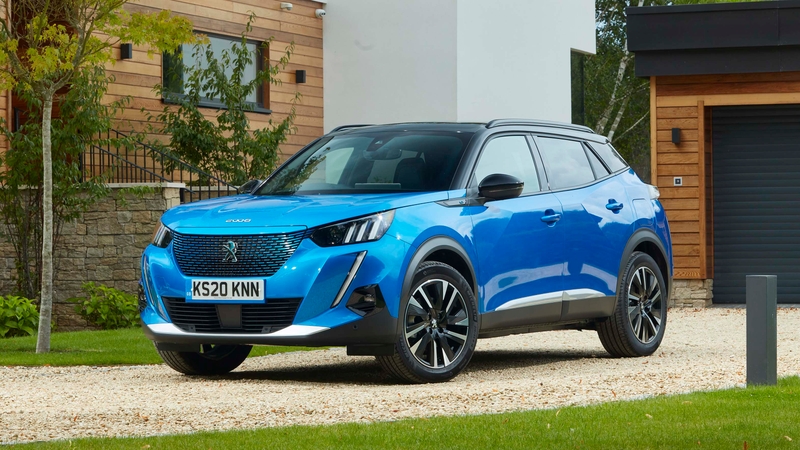










BMW X2 Review
The BMW X2 is the leaner, meaner, athleisure-wearing sibling to the more practical X1 SUV.
It’s easily one of the sharpest crossovers to drive, with composed, eager handling and strong turbo engines. In the metal, the X2 looks squat and purposeful, but the taut bodywork hides the car’s main downside – the cabin is a bit tight.
- Drives like a sporty hatchback
- Well made and well equipped
- Range-topping engines are properly fast
- Rear headroom is poor
- Boot space is mediocre
- Infotainment feels a little outdated
Should I buy a BMW X2?
BMW logic says that even numbers are more exciting than odd ones. As a result, the BMW X2 is the slick, sporty counterpart to the practical X1 small family SUV. Despite sharing mechanical parts, the X2 has a lower, wider stance and a distinct forward rake to the body, giving it a purposeful look somewhere between a coupe and a hot hatch.
The ‘go’ matches the ‘show’, too. On the road, the X2 strikes a fine balance between agile, fun handling and long-distance comfort. It’s noticeably more exciting than the softer X1, but less frantic than the mechanically related Mini Countryman.
SUVs are super popular so it’s unsurprising the X2 faces lots of competition. Buyers will probably cross shop it against cars like the Mercedes GLA, Volvo XC40, Audi Q2, Range Rover Evoque, Mazda CX-30 and Cupra Formentor.
A new X2 will be arriving on sale in 2024, with heavily updated styling and engine options. That typically means used examples of the outgoing X2 will become more affordable.
Interior and technology
The X2’s dashboard is mostly carried over from the old X1 SUV and 1 Series hatchback. That means a clean and simple design with physical buttons for the climate controls and audio adjustment, with the infotainment screen mounted above in its own bezel. We think the leather and padding on the X2’s steering wheel feels oddly spongey, but the simple semi-digital dials – a little ‘old tech’ compared to rivals’ high-def driver’s screens – are really easy to read at a glance.
In fact, because the X2 isn’t decked out in touchscreens and touch-sensitive controls like some rivals, it’s generally a very easy car to use, with many functions being controllable without taking your eyes off the road. The X2’s screen can respond to your touch but it keeps BMW’s rotary selector and shortcut buttons in the centre console, which makes changing nav or music settings easier than the same task on a touchscreen-only system.
There are downsides to the X2’s old-school approach, however. For one, the basic infotainment screen on older models measures just 6.5 inches, making it hard to read on-screen graphics. An 8.8-inch screen was optional and became standard later in the car’s life, but this setup has now been eclipsed for size and definition by newer rivals from Mercedes and Audi.
Practicality
The X2 is a car that demands a few sacrifices in return for its squat stance and sporty driving experience, and the main one is practicality. Its sibling car – the BMW X1 – is one of the most spacious cars in this class with lots of rear-seat room and a big boot. Sadly, the X2 has neither of those things.
Adults up front have lots of space but those sat in the back won’t thank you for the ride. There’s actually an acceptable amount of rear legroom – similar to a 1 Series hatch – but it’s miles off from the X1 and six-footers will be brushing the front seats with their knees. Rear headroom is the biggest issue, though, because the sloping roof means even short adults will bump their heads on the headliner.
Open the boot lid and you’ll find a fairly wide and deep space, so smaller pushchairs or a few suitcases shouldn’t pose much of a problem. Compared to the X1, however, the X2’s cargo area is short, so tall or bulky items will prove to be a challenge – especially on plug-in hybrid models, which lose some underfloor storage to the battery pack.
Engines and performance
There are a couple of petrol engines and a couple of diesel engines for X2 buyers to choose from, with a choice of sDrive front-wheel drive or xDrive four-wheel drive on the more powerful engines. Entry-level 18i and 18d engines are strong enough to get you to motorway speeds without hassle, but the more powerful 20i and 20d options do a better job of delivering the performance you’d expect from a BMW.
You’ll also find an efficient and punchy plug-in hybrid option badged xDrive25e. This pairs a 1.5-litre petrol engine with an electric motor and battery pack for hot-hatch-baiting performance, a 30-mile electric range and claimed fuel economy north of 150mpg. There’s also a rare high-performance M35i version with 306hp and dramatic acceleration but we don’t think this is worth the extra outlay to most buyers.
Driving and comfort
The X2’s a fun car to drive, and that statement comes without any caveats about this being a high-riding SUV. There’s minimal roll through corners and the front end darts towards a corner apex if you suddenly demand more steering lock. Excellent body control over uneven and undulating surfaces means you can hit some seriously fast real-world speeds in the X2, without getting launched off line by a bump in the road.
All that sharpness doesn’t have too much of an impact on ride quality, however. The X2 benefits from having more suspension travel than a hatchback like the 1 Series, so absorbs the harshness from big impacts adeptly, without upsetting the body’s balance. Big wheels and a sporty setup can’t be totally hidden, however, so you do notice some patter through the base of your seat over scruffy road surfaces.





























































